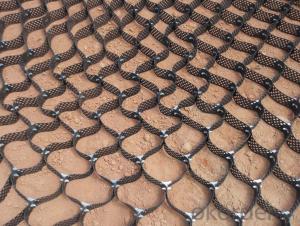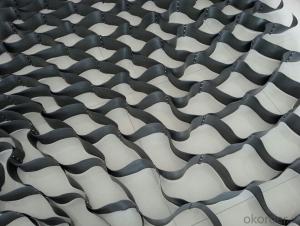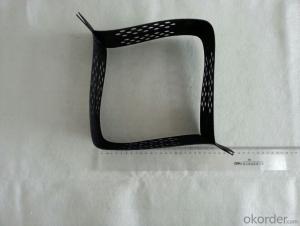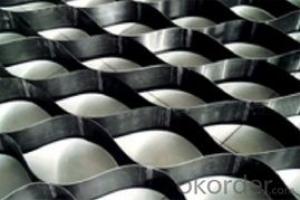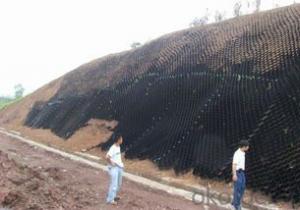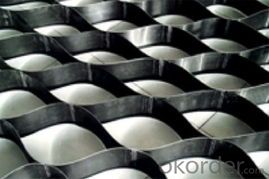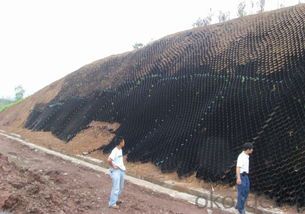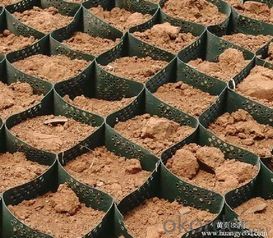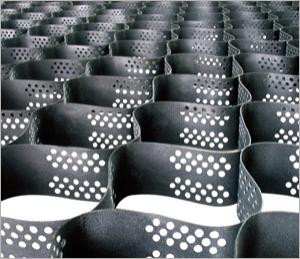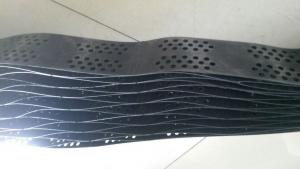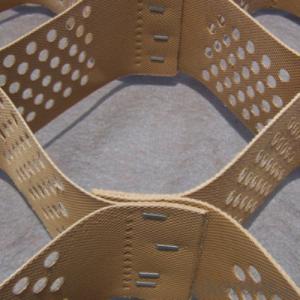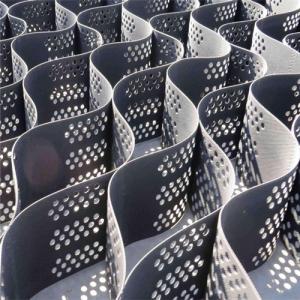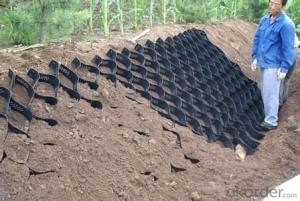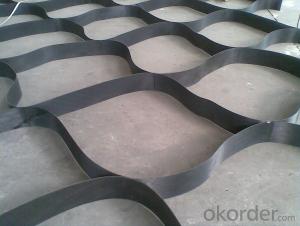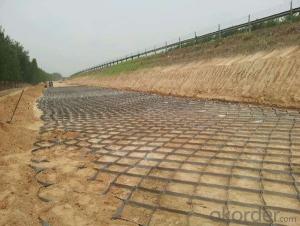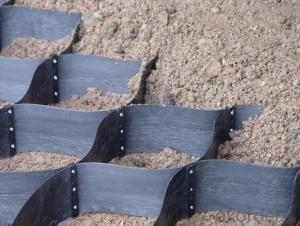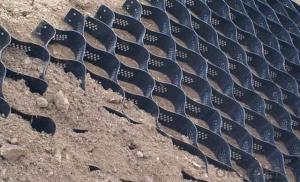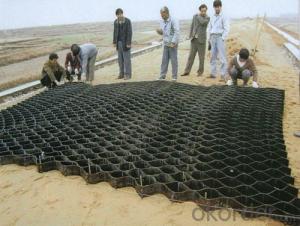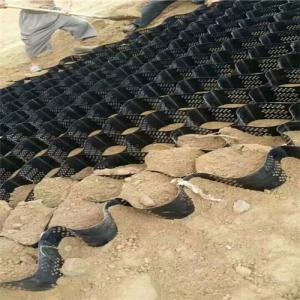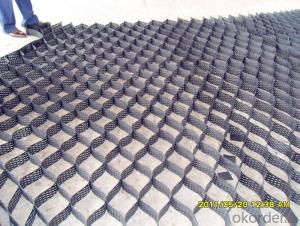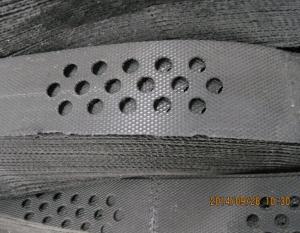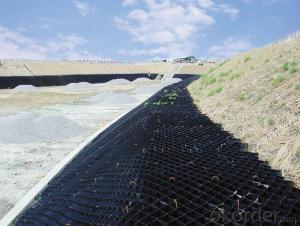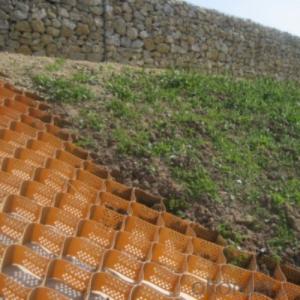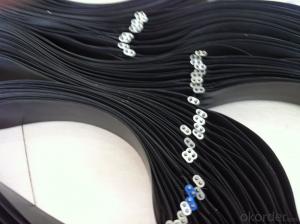Plastic HDPE Geocell for Road Slope Reinforcement
- Loading Port:
- Qingdao
- Payment Terms:
- TT OR LC
- Min Order Qty:
- 1000 g/m²
- Supply Capability:
- 100000 g/m²/month
OKorder Service Pledge
OKorder Financial Service
You Might Also Like
HDPE Geocell with CE Certificate (Manufaturer directly!)
Geocell Cellular Confinement Systems / Geocell / Geocell systems / HDPE Smooth/Textured Plastic Geocell
1.welding distance:330-1000mm
2.height:50-250mm
3.Textured or Smooth surface
4.Color: black,brown,green
we are one of the largest geocell factory in China.
Specification:
Polymer Density | High Density Polyethylene with density of 0.935 - 0.965 g/cm3 ASTM D 1505 |
Environmental Stress Crack Resistance | > 4000 hours ASTM D 1693 |
Carbon Black Content | Carbon black content 1.5% - 2.0% ASTM D 1603 |
Sheet Thickness | Smooth:1.1mm,1.2mm,textured:1.5mm ASTM D 5199 |
Cell Details | welding distance:330-1000mm |
Cell Depth | 50-250mm |
Seam Peel Strength | As per US Army Corps of Engineer's Report GL-86-19 Appendix A |
Seam Hang Strength | A 100mm wide seam sample supports a 72.5 kg load for a minimum of 30 days in an ambient room temperature environment. |
Certification | CE ,ISO |
Item Model | Height (mm) | Welding distance (mm) | Sheet thickness (mm)
| Tensile yield strength of the cell (MPa) | Seam peel strength (N/250px) | |
smooth | textured | |||||
TGLG-50-400 | 50 | 400 | 1~1.1 | 1.4~1.5 | 20.0 | 1000 |
TGLG-100-400 | 100 | 400 | 1~1.1 | 1.4~1.5 | 20.0 | 1000 |
TGLG-150-400 | 150 | 400 | 1~1.1 | 1.4~1.5 | 20.0 | 1000 |
TGLG-200-400 | 200 | 400 | 1~1.1 | 1.4~1.5 | 20.0 | 1000 |
TGLG-75-330 | 75 | 330 | 1~1.1 | 1.4~1.5 | 20.0 | 1000 |
TGLG-100-330 | 100 | 300 | 1~1.1 | 1.4~1.5 | 20.0 | 1000 |
TGLG-150-330 | 150 | 330 | 1~1.1 | 1.4~1.5 | 20.0 | 1000 |
Notes:
(1)welding distance:330mm~800mm
(2)we can produce smooth/textured geocell, perforated/non-perforated geocell
(3)The special spec or size can be manufactured according to the demands of the contract
Images of Geocell
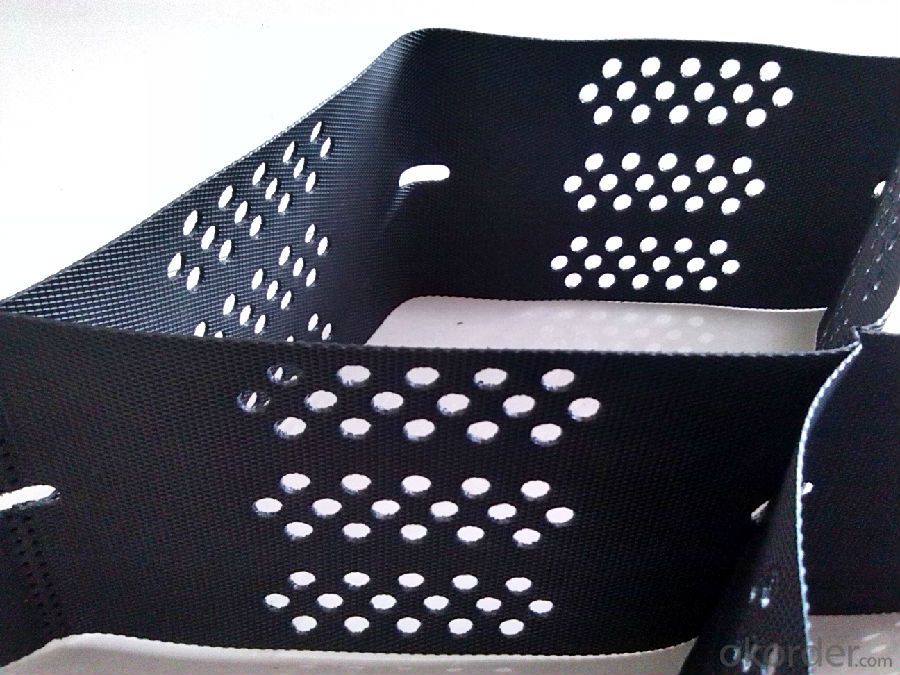
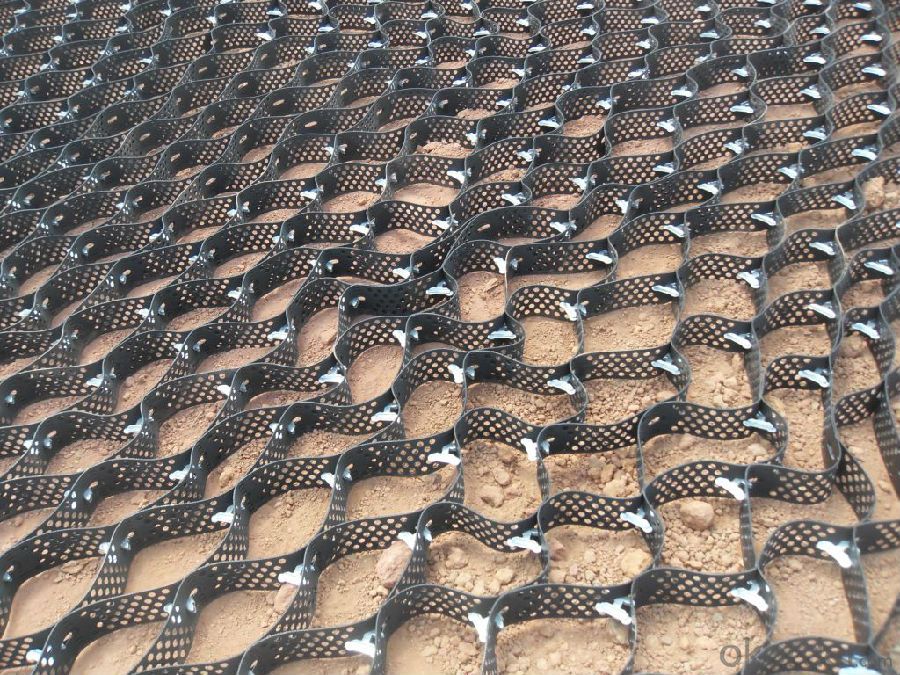
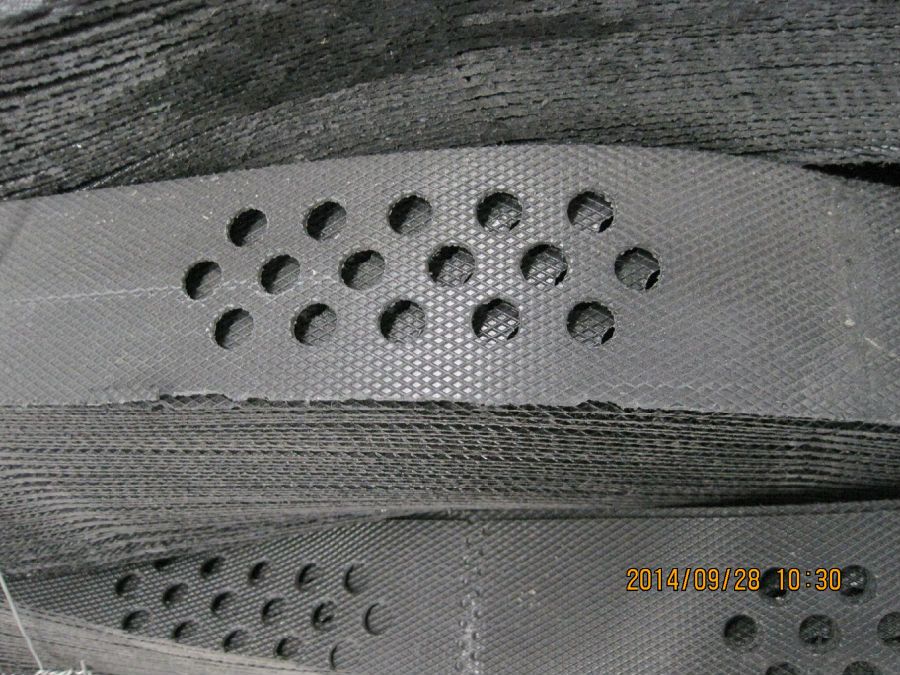
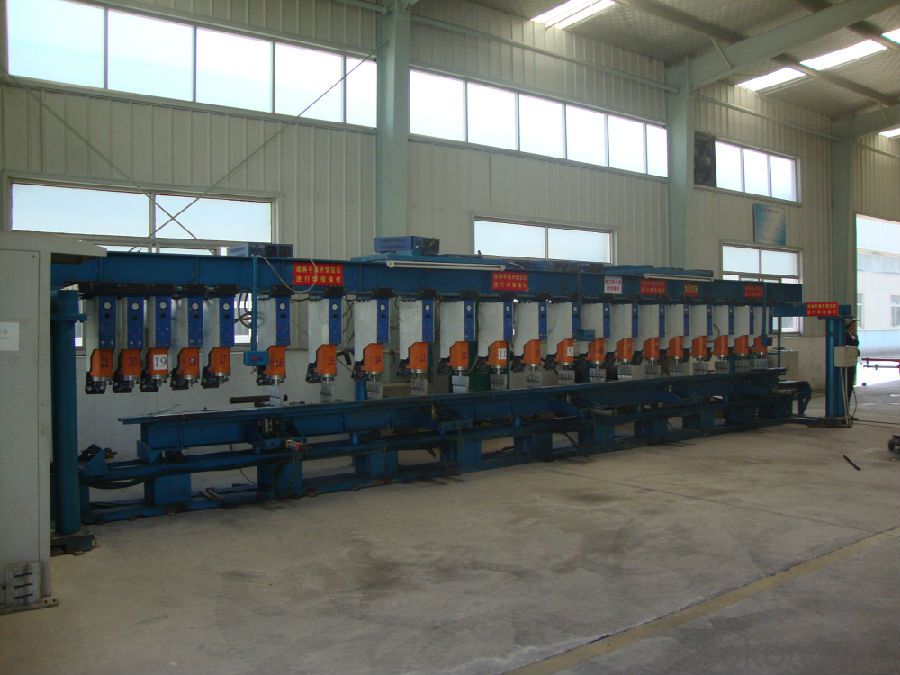
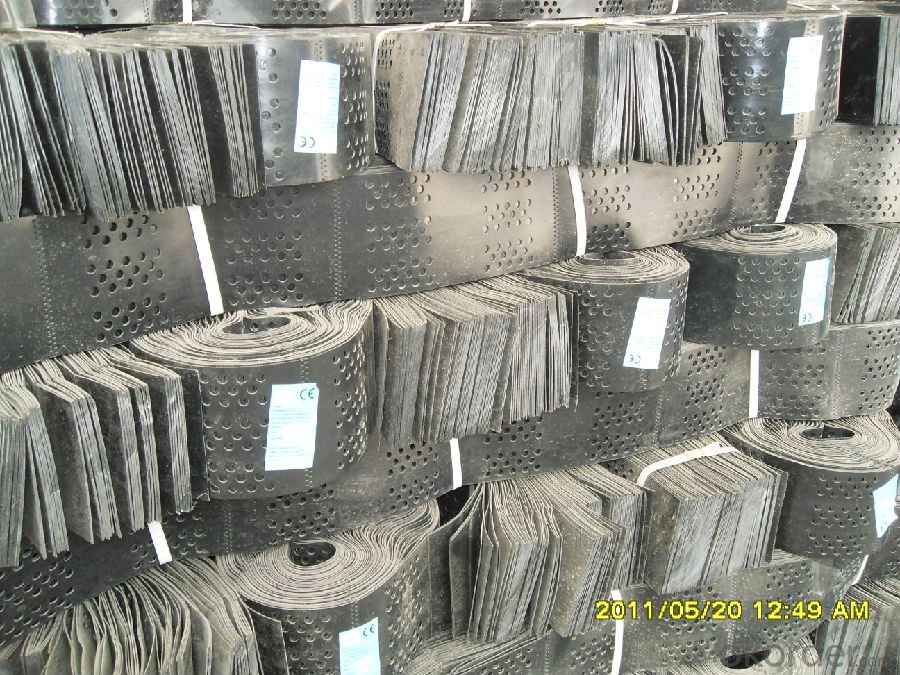
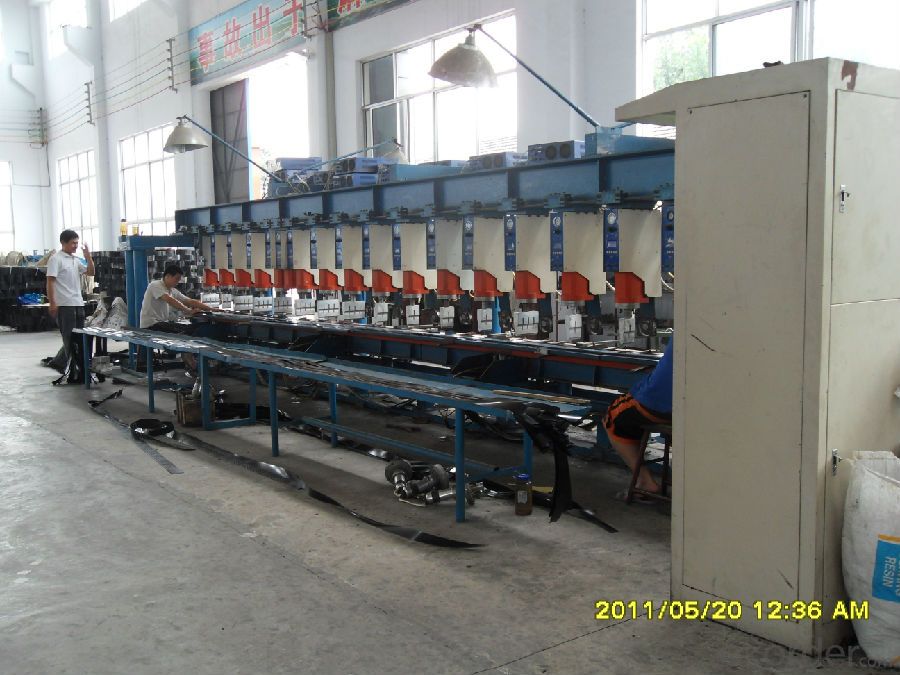
- Q: Can geocells be used for tree root barriers?
- Yes, geocells can be used for tree root barriers. Geocells are cellular confinement systems made of high-density polyethylene that provide structural support and containment for soil, preventing soil erosion and promoting vegetation growth. By installing geocells around trees, they can act as an effective root barrier, restricting root growth in unwanted areas and protecting surrounding infrastructure. The cells can be filled with soil or aggregate, creating a stable and permeable barrier that allows for proper water and air flow while preventing root encroachment.
- Q: Can geocells be used for revetment applications?
- Yes, geocells can be used for revetment applications. Geocells are three-dimensional cellular confinement systems made from high-density polyethylene or other materials. They are commonly filled with granular materials such as soil, sand, or gravel to create a stable and erosion-resistant structure. The interconnected cells provide confinement and prevent lateral movement of the fill material. This makes geocells an effective solution for revetment applications, as they can help protect slopes, shorelines, and riverbanks from erosion.
- Q: How do geocells reduce surface water runoff?
- Geocells reduce surface water runoff by providing a structured and permeable surface that allows for effective water infiltration into the ground, preventing excess water from flowing over the surface. The interconnected cells of geocells provide stability to soil, preventing erosion and promoting water retention, ultimately reducing the amount of runoff.
- Q: What is the lifespan of geocells?
- The lifespan of geocells can vary depending on various factors such as the type of material used, the environmental conditions, and the intensity of use. However, in general, geocells are designed to be durable and have a lifespan ranging from 10 to 20 years or even longer with proper maintenance.
- Q: Can geocells be used for temporary access roads?
- Yes, geocells can indeed be used for temporary access roads. Geocells are designed to provide structural support and stabilization, making them suitable for creating stable and durable surfaces for temporary roads. They can be filled with various materials like gravel or sand to enhance load-bearing capacity and improve traction. Additionally, geocells are easy to install, cost-effective, and environmentally friendly, making them a practical choice for temporary access roads in construction sites, events, or remote locations.
- Q: What is the maximum temperature geocells can withstand?
- The maximum temperature geocells can typically withstand ranges from 70 to 90 degrees Celsius, depending on the specific material and design of the geocell.
- Q: Can geocells be used in wildlife habitat restoration?
- Yes, geocells can be used in wildlife habitat restoration. Geocells are permeable cellular confinement systems that can be filled with soil or other materials to create stable and sustainable habitats for wildlife. They can be used to restore areas affected by erosion, create wetland habitats, or enhance the habitat complexity in various ecosystems, promoting biodiversity and supporting the growth of vegetation that is vital for wildlife.
- Q: How do geocells improve load-bearing on weak subgrades?
- Geocells improve load-bearing on weak subgrades by confining and stabilizing the soil, creating a reinforced structure that distributes the load more effectively. The interconnected cells provide lateral support, preventing lateral spreading of the soil particles and increasing their shear strength. This confinement reduces the deformation of the subgrade, enhancing its load-bearing capacity and preventing settlement.
- Q: How do geocells improve the stability of steep slopes?
- Geocells improve the stability of steep slopes by confining and reinforcing the soil, preventing erosion and slope failure. The honeycomb-like structure of geocells provides lateral support and prevents soil from sliding down the slope. They also enhance load distribution by increasing the effective width of the slope, reducing stresses on the soil. Additionally, the cells can be filled with various materials like gravel or concrete, further enhancing slope stability.
- Q: Can geocells be used in load transfer platforms?
- Yes, geocells can be used in load transfer platforms. Geocells are three-dimensional cellular confinement systems made from high-density polyethylene (HDPE) or other materials. They are designed to provide stability and reinforcement to various applications, including load transfer platforms. Geocells distribute the load, enhance soil confinement, and improve the overall performance of load transfer platforms, making them a suitable choice for such applications.
Send your message to us
Plastic HDPE Geocell for Road Slope Reinforcement
- Loading Port:
- Qingdao
- Payment Terms:
- TT OR LC
- Min Order Qty:
- 1000 g/m²
- Supply Capability:
- 100000 g/m²/month
OKorder Service Pledge
OKorder Financial Service
Similar products
Hot products
Hot Searches
Related keywords
